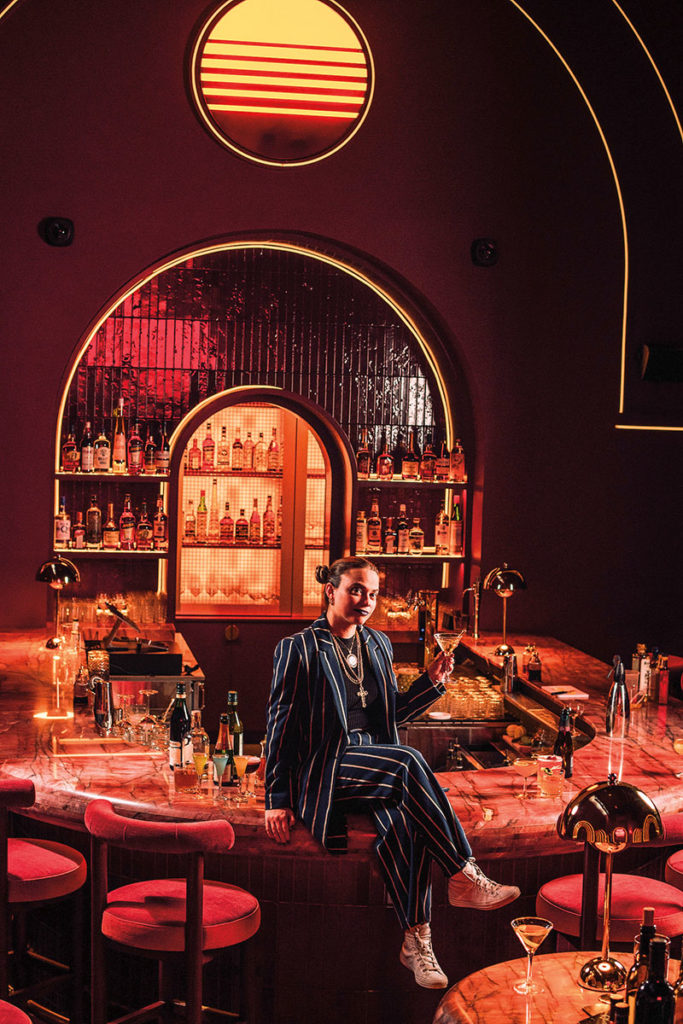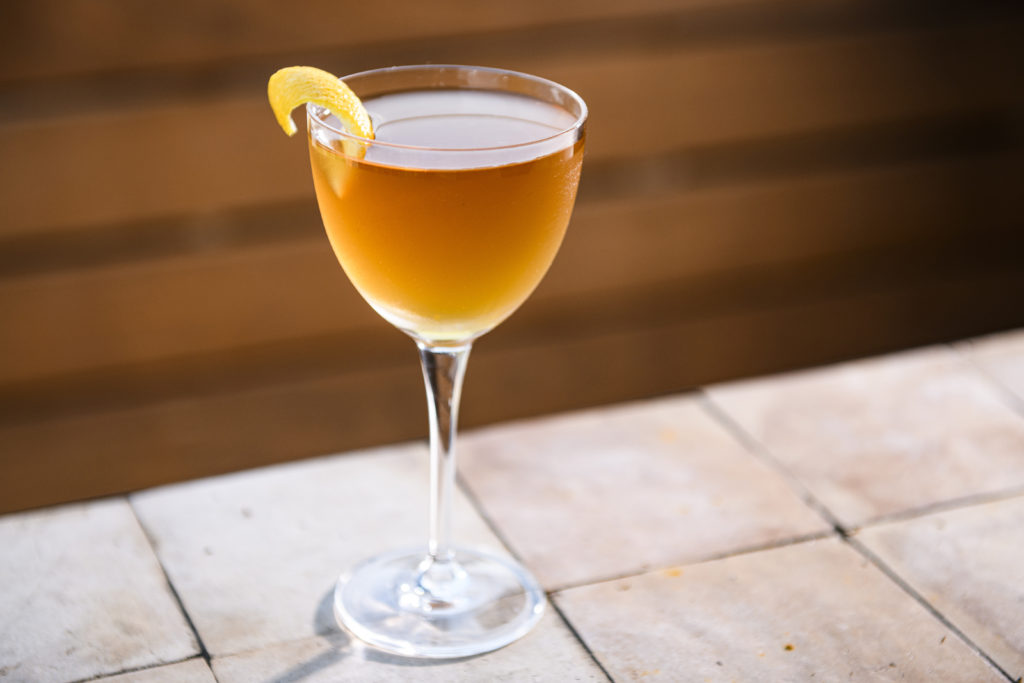
“Liqueurs and cordials are definitely the backbone of our program,” says Sophie Burton, beverage director of JoJo’s Beloved Cocktail Lounge in Atlanta. “Obviously they are used in conjunction with other spirits, but I’d say that each of our house cocktails and most of our called-for classics incorporate some type of cordial or liqueur.”
For certain, mixologists aren’t shy about sharing their love for liqueurs. Consumption of cordials and liqueurs increased 3.1% in 2020, according to the Beverage Information Group’s 2021 Liquor Handbook (a sister brand of Beverage Dynamics), reaching 26.3 million 9-liter cases in the U.S.
That’s a slight improvement on the category’s 2.7% rise in 2019. It’s even more impressive when you consider that the on-premise sector, which is typically where cordials and liqueurs shine, was shuttered or restricted for much of 2020 due to the pandemic.
“If bitters are the bartender’s spice rack, liqueurs and cordials are the garden and the bakery, bringing endless availability of fruits and herbs, bitters and sweets to the bartender’s cache and collection,” says Blake Nightingale, general manager of Minus5¡ Ice Bar and 1923 Prohibition Bar at Mandalay Bay in Las Vegas. Cordials and liqueurs are widely popular “as both star ingredients and purposeful additives to many concoctions of our cocktail programs.”
His two bar concepts stock upwards of 40 different liqueurs and cordials, Nightingale says. “Liqueurs are so various and multi-faceted; we can use them in various ways to achieve a targeted cocktail profile and presentation.”
For Minus5, a bar attraction made of ice, the drinks play a huge part in the immersive experience, he notes. “The right liqueurs can push the flavor profiles and even colors of a cocktail to contribute to that experience.”

At 1923 Prohibition Bar, which is a modern tribute to Prohibition and the speakeasy genre of bars, “our cocktail program pays respect to a lot of traditional liqueurs,” Nightingale says. That includes the same backbar staples used by barkeeps in the roaring ‘20s, “but also introduces some modern flare with newer liqueurs and classic cocktail variations.”
What’s more, Nightingale says, “We are seeing more interest in some brands and their history coming from our post-lockdown guests, which I believe stems from the necessity of at-home bar creativity brought on during lockdown, and the plethora of self-made connoisseurs as result.”
Cordials and Liqueurs: Brand Reception
Sazerac’s cinnamon-flavored Fireball is the leading brand, increasing 11% to just under 6.3 million cases in 2020, according to the Liquor Handbook. But cream liqueur brand RumChata was the fastest-growing liqueur, up nearly 16% to reach 550,000 cases. The brand’s parent company, Agave Loco, was acquired by E&J Gallo Winery this past April.
JoJo’s Beloved Cocktail Lounge probably carries about three dozen individual different types of cordials, liqueurs, amari and bitters, Burton says. “Grand Marnier is always popular, and the growth in the bitter and amaro category has been absolutely tremendous.”
Chartreuse remains popular, and guests have been requesting ginger liqueurs more often, she notes. “At JoJo’s, we use a ton of Galliano, Drangoncello, Amaretto, Midori and Blue Curacao.”
New York rooftop bar Somewhere in Nolita carries a variety of flavored liqueurs from Giffard, as well as some stand-alone favorites such as Italius, Chinola, Ume plum liqueur and Luxardo, says head bartender Greg Kong. “Cordials and liqueurs are great ways to add additional flavors to a cocktail as supporting flavors,” he notes.
Liqueurs on the cocktail menus at Minus5¡ Ice Bar and 1923 Prohibition Bar include Amaro Nonino; Ferrand Dry Curacao; Benedictine; Fernet Branca; Domaine de Canton ginger liqueur; St. Germain; Cointreau; Grand Marnier and Luxardo. Nightingale also enjoys the liqueurs produced by Combier and Tempus Fugit Spirits. “I am a huge fan of their cremes and vermouths and bitter aperitivo.”

Cordial Cocktails
One lasting trend is the renaissance that Aperol — the bitter orange liqueur owned by Campari — has enjoyed in recent years. “The benefit of Aperol’s success is that now other bitter liqueurs are getting their time to shine as star ingredient,” Nightingale says. “And some really unique and exciting classic cocktail variations are popping up on cocktail menus everywhere.”
At 1923 Prohibition Bar, where the cocktail program and focus is on bourbon, the best-selling cocktail is the 1923 Barrel Aged Old Fashioned. It’s a modern twist on the classic that features Nevada’s Smoke Wagon straight bourbon, “which we age in an oak barrel with Amaro Nonino, Ferrand’s Dry Curacao, and bitters to accentuate the profile of the bourbon,” he notes.
The Gangster’s Holy Grail cocktail, priced at $16, “is an ode to the Prohibition Era trend of to mask the taste and smell of sketchy liquor and features herbal liqueurs, as Fernet Branca and Domaine de Canton ginger liqueur are paired with lemon juice and ginger beer,” Nightingale says.

JoJo’s offers intentionally nostalgic cocktails and often-forgotten favorites from the 1970s and ‘80s eras of disco and glam, so colorful liqueurs figure prominently. The Saggitarian Sour, priced at $15, uses Midori melon liqueur, singani, Luxardo Bitter Bianco, lemon juice, simple syrup and cocktail foam. The Bluetsy Collins incorporates Weber blue agave tequila, a slightly spicy blue cordial and cocktail foam, topped with sparkling water.
The My Offer is Nothing cocktail ($16), a riff on the Godfather, features amaretto and Dragoncello. Dialing back the amaretto and adding Dragoncello, a tarragon liqueur, “gives a few new notes, while the lemon oil and mole bitters round out this cocktail to a luxuriant savory, smokey, kiss of sweet finish,” Burton says.
At Somewhere in Nolita, the Pineapple Over The Sea cocktail uses Giffard pineapple liqueur to give some additional pineapple flavor to the cocktail, as well as a hint of sweetness to balance out the other flavors, Kong says. For the drink called What A Dandy, “I use a new plum liqueur called Ume that adds a nice balance of sweetness and tartness to the cocktail.”
Kong also likes to make his own modifiers. “Creating home-made cordials and liqueurs are also a great way to reuse products, or scraps from bar prep, to add flavor to a cocktail and give them a second or extended life, rather than just discarding them.”
Melissa Dowling is editor of Cheers magazine, our on-premise sister publication. Contact her at mdowling@epgmediallc.com, and read her recent pieces, Celebrating Women in Alcohol, Part 1 and Part 2.



